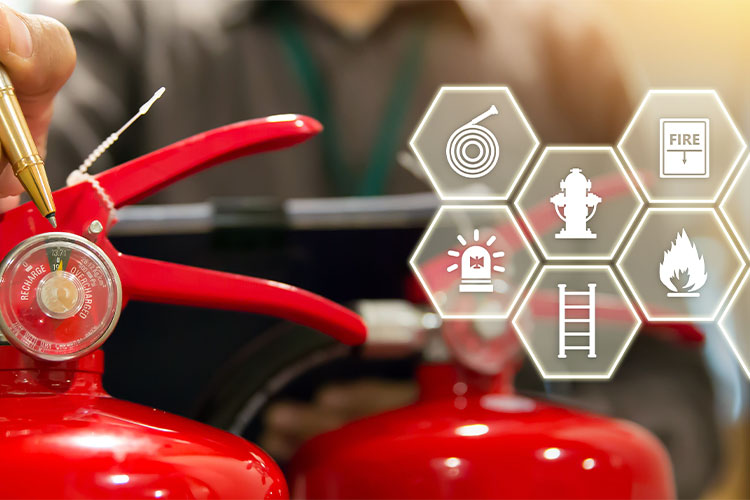Step-by-Step Installation Guide for Temporary Wireless Fire Alarms:
- Plan Your Layout: Start by drawing a rough floor plan. Identify key areas like corridors, exits, and potential fire sources. Mark spots for mounting sensors and detectors.
- Inspect Your Equipment: Check that every unit – alarms, sensors, and control panels – is in good condition. Confirm battery life or wiring needs before you start.
- Mounting the Devices: Position your devices on walls or ceilings where they will be exposed to the maximum amount of smoke or heat. Follow the manufacturer’s guidelines for spacing. A little extra care here will reduce your chances of missing an early warning.
- Power Up: If your system runs on batteries, ensure they’re fully charged and fresh. For wired units, secure all cables neatly to avoid any tripping hazards. If you’re using both, check that they work well together.
- Run a Test: After setting everything up, run a quick test. Press the test button on each sensor and alarm to check for proper sound and connectivity. This simple step confirms that your temporary setup is ready for action.
Best Practices for Placement of Sensors and Detectors
You might ask, “Where exactly should I place these devices?”
- Avoid Obstructions: Place sensors in open spaces where nothing blocks the signal. This means keeping them away from large pieces of furniture or equipment.
- Keep Away from Heat Sources: Don’t position alarms near kitchens, heaters, or any other source that might cause false alerts.
- High Traffic Areas: Install detectors in places where people gather—corridors, lobbies, and near exit doors—to ensure early warning reaches everyone quickly.
- Follow Manufacturer Instructions: I always check the manual for specific spacing advice. Often, a recommended distance from walls and ceilings improves detection.
Wiring and Power Considerations
Even though these alarms are wireless, power is still a key issue.
- Battery Check: Use quality batteries and note the installation date. Change them if there’s any sign of wear or the unit warns you beforehand.
- Cable Management (if applicable): Some alarms may need occasional wiring, especially if linked to a control panel. Make sure all cables are tucked away neatly and secured using cable clips so they don’t become a hazard.
- Backup Options: For extra peace of mind, consider having a backup power source. If you’re setting up in a busy area, this could be a second battery pack or an alternative power connection.
Ensuring Adequate Coverage and Sensitivity
Getting full coverage and the proper sensitivity is a must. Here’s how to ensure every area is covered:
- Test Each Zone: Walk through your area after installation to check that every sensor is working. We often use a temporary signal source (like a smoke or a heat gun, following safety guidelines) to see if the alarms trigger.
- Adjust Settings: Some sensors come with adjustable sensitivity. If you notice frequent false alarms or a delayed response, tweak these settings until you find a balance.
- Monitor Signal Strength: Wireless systems rely on a clear signal. Check for interference from other wireless devices and adjust the placement if needed.
- Regular Checks: We inspect the system regularly. A quick check-up helps spot issues before they become problems.
Integration with Other Fire Safety Systems
A well-rounded fire safety setup doesn’t work in isolation. Here’s how to make sure your temporary system fits in with other safety measures:
- Sync with Existing Alarms: If you already have a permanent system, connect your temporary wireless fire alarms so that everything sounds off together in an emergency. This might mean linking the temporary control panel with your building’s central system.
- Connect with Sprinklers and Detectors: The temporary system can often trigger other devices, such as sprinklers or additional alarms. Always check that the systems are compatible.
- Keep Communication Open: Ensure your temporary system is visible to the building manager or safety officer. A simple shared setup means that everyone is on the same page in case of an alert.
- Plan for Contingencies: I always recommend having a simple backup plan. This means manual checks or a secondary notification system if one part of the system fails.
Wrapping Up
Following these straightforward steps and best practices, you can be confident that your temporary fire alarm setup will work when it counts the most. Remember, the key is to keep things simple, check your equipment, and test your system thoroughly. Whether you’re setting up in a temporary event space or an interim office, a well-planned installation is your best defence against fire emergencies.

